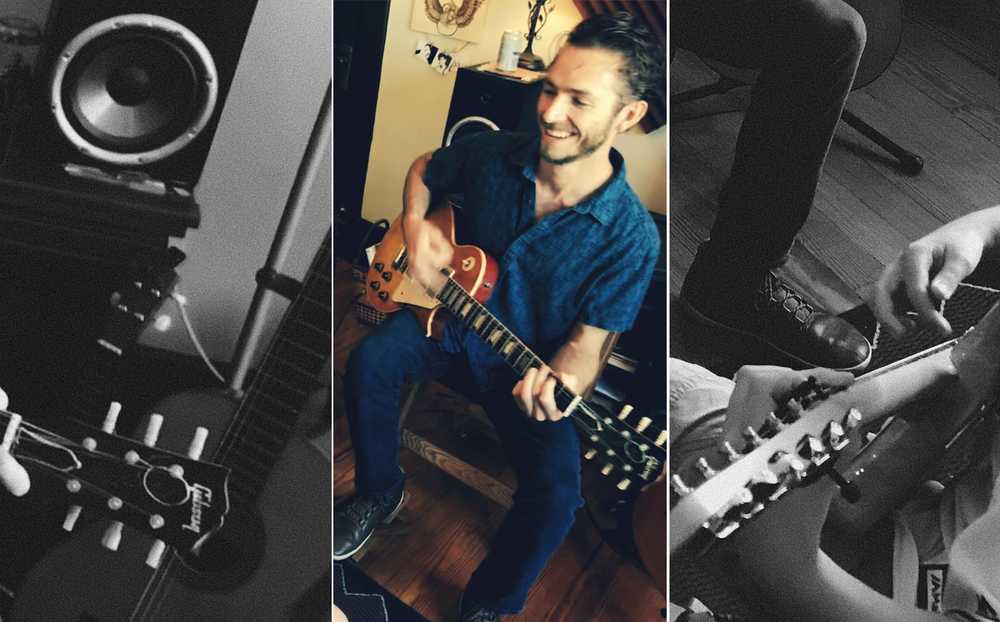
From guitar gamer to guitar player, part 2
Guest post by guitarist/composer/teacher Trevor Willmott, Nashville, TN
⭐️ Read part 1 first
Practice in patience
Over the last 20 years as a musician, some of my fondest memories come from one of two scenarios: moments of creative inspiration and live performances. I’ve never felt more alive than the moment an idea strikes, and a new song starts to flow out. Equally so, there is nothing more invigorating than stepping onto a stage with my fellow band mates, plugging in my guitar, looking out to the audience and letting loose into that first riff. I have truly lived for these moments in my journey and continue to thrive in these environments today.
On the other hand, my life as a guitar instructor over the last 13 years has proven to be a bit more frustrating. Now, don’t get me wrong — there have been plenty of inspirational moments. Even so, the average lesson often becomes a practice in patience. Here’s an example:
Little Johnny had one week to work on the new song I taught him. Two days before the next lesson, Johnny’s parents suddenly remember to remind their son to practice. It’s been a busy week. Johnny starts to complain because he can’t remember how to play the song. His parents are stumped because they can’t read music. After much frustration and whining from Johnny, the parent’s give up and let him do something else.
Johnny walks into our lesson and we end up learning the song all over again. I help him through the notes repeatedly until muscle memory begins to take over. At this point, I know that his fingers will have the best possible chance for success when he gets home. Unfortunately, another seven days goes by and what a surprise — he still hasn’t practiced! So, here I am teaching Johnny the same notes from two weeks ago…AGAIN.
I am sure teachers from every discipline can relate to this scenario. It’s the very reason we have a stereotype for the “old, tired, and boring professor who needs to retire.” When students resist facing new challenges, it weighs on a teacher’s enthusiasm and love for sharing knowledge. Thus, it takes a certain fortitude and bird’s-eye view, to maintain clarity in our purpose as teachers. Especially, considering that very few people are perfect students, anyway. I surely was not.
That being said, wouldn’t it make sense that a teacher’s main objective should be to create curriculum that helps students overcome their own resistance? Personally, I believe so.
The three main styles of learning
I’ve heard similar stories from parents far too many times. Little Johnny is not alone — many teenage and adult students avoid practicing when they can’t recall what they learned during their lesson. So, how can teachers help facilitate productive practicing at home? It starts with understanding the three main styles of learning: visual, auditory, and kinesthetic. From there, it is a matter of making sure each student has access to curriculum that aligns with his or her learning type. Without it, both students and teachers are facing an uphill battle. That’s where Go PlayAlong comes in!
Visual learners
Visually, the software covers every angle. On the top of the screen, there is a perfectly synced HD video of someone playing the song to demonstrate both left- and right- hand techniques. Underneath, the song scrolls along with either standard notation or tablature, depending on the student’s preference. There are also various types of animation for highlighting the rhythms, finger colors to encourage correct hand positioning, and much more. It’s truly the visual learner’s oasis.
Auditory learners
So, what’s in it for auditory learners? Well, the above features are also synced with an audio track, which means students can actually hear the music as they play along. For students who struggle with the one-dimensional restrictions of sheet music, this is priceless.
It not only forces students to learn the correct notes and rhythms, but also adds a sense of realism that a piece of paper cannot. In addition, students can slow down the music without changing the pitch, making every aspect of the program even more useful and effective.
Kinesthetic learners
And last but not least, for kinesthetic learners, the mere use of a touch screen vs. sheet music is often all it takes. The student now gets to physically interact not only with their instrument but also the curriculum itself. The video component alone allows them to more easily mimic the physical mechanics of a musical piece. While it is no replacement for a teacher who can physically help adjust the hands, it is as close as it gets without a teacher being present. And again, the ability to slow down the tempo, allows kinesthetic learners to be more accurate and efficient when programming muscle memory. It’s all about the FEEL man!
Enjoy practicing
Regardless of a student’s dominant learning type, Go PlayAlong can make practicing guitar much more enjoyable. It streamlines the process and gives students the modern interactive experience they crave.
While sheet music may be a far cry from the stage, Go PlayAlong makes it possible for students to feel as though they are performing in a band from day one. With both audio and video, a well-made curriculum could be the difference between a few mediocre lessons and the start of a lifelong passion in music.
I’ve certainly witnessed the power of modern technology in my own lessons and will continue developing curriculum for Go PlayAlong. I highly recommend instructors to try it out with their students. All you have to do is plug-in, press play, and rock on!
About The Author
With over 12 years of professional teaching experience and nearly 20 years as a guitarist/musician, Trevor Willmott has developed an effective, unique, and fun style of teaching. With countless hours of practice in nearly every genre, Trevor designs custom curriculum to meet the needs of each student as they progress through their journey. Because no student is the same, this personalized approach has proven the most effective for inspiring a passion in music and the motivation to keep learning.

After graduating Belmont University in 2012 with a Bachelor’s of Music in Jazz Guitar, Trevor has continued teaching, writing, recording, and performing music nationwide. Having taught students from ages 3–80 years old, Trevor is a patient and encouraging teacher who believes in positive reinforcement and open communication during lessons.